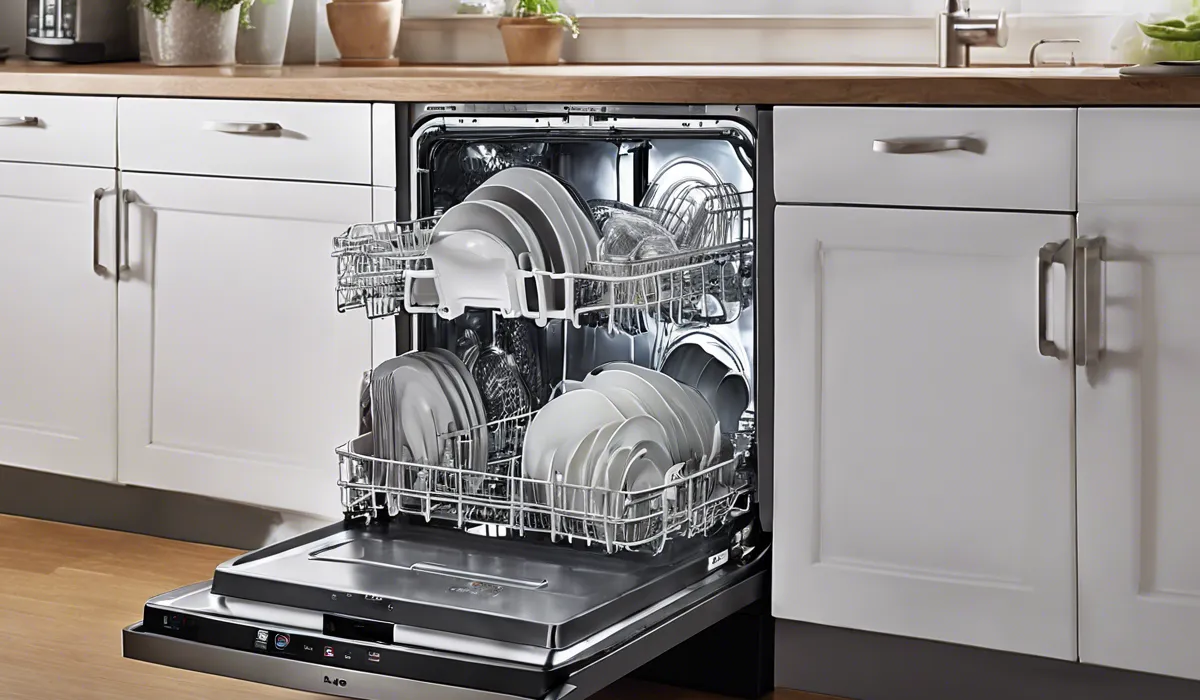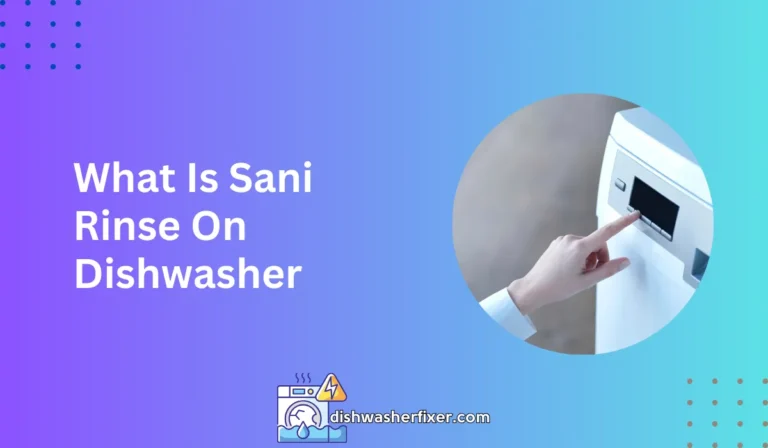How to Force Drain LG Dishwasher: Quick Fix Guide
To force drain an LG dishwasher, start by turning off the power. Then, locate the drain hose, detach it from the sink or garbage disposal, and lower it into a bucket to drain water. If necessary, manually remove remaining water from the sump in the dishwasher’s base.
Understanding Your LG Dishwasher’s Drain System

Overview of the LG Dishwasher’s Built-In Drain System
An LG dishwasher is designed with a sophisticated drain system that plays a crucial role in its operation.
This system includes a drain pump, hose, and filter, all of which work together to remove water from the dishwasher after a wash cycle.
Understanding how these components interact is the first step to maintaining and troubleshooting your appliance.
Importance of Proper Drainage for Dishwasher Function
Proper drainage is essential for a dishwasher’s performance and hygiene. Without it, water can back up, leading to potential water damage, unpleasant odors, and a breeding ground for bacteria.
Ensuring that your dishwasher drains correctly is therefore key to its functionality and the cleanliness of your dishes.
Common Reasons for Drainage Issues
Clogged Filters
A common culprit for drainage problems is a clogged filter. Over time, food particles and debris can accumulate in the filter, impeding water flow. Regularly checking and cleaning your dishwasher’s filter is a simple way to prevent clogs.
Blocked Hoses
Hoses that carry water in and out of your dishwasher can become blocked with debris or kinks. Inspecting these hoses regularly for obstructions or damage can help maintain consistent drainage.
Malfunctioning Drain Pump
The drain pump is responsible for pushing water out of the dishwasher. If it’s not working correctly, water won’t drain out. This could be due to a blockage or a mechanical failure.
Step-by-Step Guide to Manually Draining Your LG Dishwasher

Safety Precautions Before Starting the Process
Before attempting to drain your dishwasher, always prioritize safety. Turn off the power to the dishwasher at the circuit breaker to eliminate the risk of electric shock. Additionally, shutting off the water supply can prevent any accidental flooding.
Preparing the Dishwasher for Manual Drainage
Turning Off Power and Water Supply
Make certain that the dishwasher is disconnected from the power source and that the water supply valve, typically located under the sink, is closed.
Removing Dishes and Dishwasher Racks
Remove all dishes and racks from the dishwasher to clear the space needed for draining and to prevent any items from being damaged.
Locating the Drain Hose and Drain Pump
Find the drain hose connected to the dishwasher, which typically runs to the sink or garbage disposal. The drain pump is usually located at the bottom of the dishwasher and can be accessed by removing the kickplate or front panel.
Instructions for Removing Any Clogs or Obstructions
Check the drain hose for kinks or clogs by running water through it. If the hose is clear, inspect the dishwasher’s sump area and the drain pump for any debris that might be causing a blockage.
Step-by-Step Instructions on How to Force the Dishwasher to Drain
Using a Sponge or Towel to Remove Excess Water
If water remains in the dishwasher, use a sponge or towel to soak up as much as possible. This will make it easier to work on the drain system.
Detaching the Drain Hose and Clearing Any Blockages
Disconnect the drain hose from where it attaches to the sink or garbage disposal. Lower the hose into a bucket to allow gravity to drain the water. If the water doesn’t flow freely, there may be a blockage that needs to be cleared.
Checking the Drain Pump for Obstructions
With the drain hose removed, you can also access the drain pump. Inspect it for any obstructions or debris and remove them as necessary.
Manual Activation of the Drain Cycle If Applicable
Some LG dishwasher models allow for the manual activation of the drain cycle. Refer to your owner’s manual to see if this feature is available and how to use it.
Preventive Measures and Routine Maintenance

Regular Cleaning and Maintenance Schedules for Your LG Dishwasher
To keep your LG dishwasher running smoothly, establish a regular cleaning and maintenance schedule. This includes cleaning the filter, checking the spray arms, and inspecting the hoses for kinks or leaks.
Tips for Preventing Future Drainage Issues
Proper Loading Techniques to Avoid Blockages
Load your dishwasher correctly to prevent items from falling and blocking the spray arms or filter. Ensure that large items do not obstruct the detergent dispenser or the dishwasher’s internal components.
Regularly Cleaning Filters and Checking for Debris
Clean your dishwasher’s filter regularly to prevent debris build-up. This simple task can significantly reduce the likelihood of clogs and drainage issues.
When to Seek Professional Help
Identifying Problems Beyond Basic Troubleshooting
If you’ve followed all the troubleshooting steps and your dishwasher still isn’t draining, it may be time to seek professional help. A qualified technician can diagnose and repair issues that are not easily fixed at home.
Warranty and Support Information for LG Dishwashers
Check your LG dishwasher’s warranty and contact customer support for assistance. They can provide you with information on service options and whether your dishwasher is still under warranty.
FAQs About Force Draining LG Dishwasher
How do I start the process of force draining my LG dishwasher?
Begin by turning off the power to your LG dishwasher to ensure safety during the force drain process.
Where is the drain hose located on an LG dishwasher?
The drain hose is typically attached to the sink or garbage disposal beneath the kitchen counter.
What should I do with the drain hose to force drain my LG dishwasher?
Detach the drain hose from the sink or garbage disposal and lower it into a bucket to allow the water to drain out.
What if water remains in the sump after draining the LG dishwasher?
If water is still present in the sump after draining, manually remove it using a sponge or cloth.
Is it safe to force drain my LG dishwasher without professional help?
Yes, it is safe to force drain your LG dishwasher by following the correct steps, but if you are unsure, it’s best to consult the user manual or seek professional assistance.
Final Thoughts
To force drain an LG dishwasher, ensure the power is off before starting. Find the drain hose, disconnect it, and lower it into a bucket. This allows water to flow out by gravity.
For any water left inside, it may be necessary to manually scoop it out from the sump at the dishwasher’s base.
Useful Resources
- https://sakai.unc.edu/access/content/user/vschoenb/public%20library/Big%20public%20health%20concerns/Poverty/Exploitation/https%3A__www.usatod20170622135443.URL
- https://www.cpsc.gov/Recalls/2012/lg-recalls-top-loading-washing-machines-due-to-risk-of-injury
- https://dam.assets.ohio.gov/image/upload/epa.ohio.gov/Portals/35/lakeerie/ptaskforce/Task_Force_Final_Report_April_2010.pdf




